BATTLING THE DEMONS
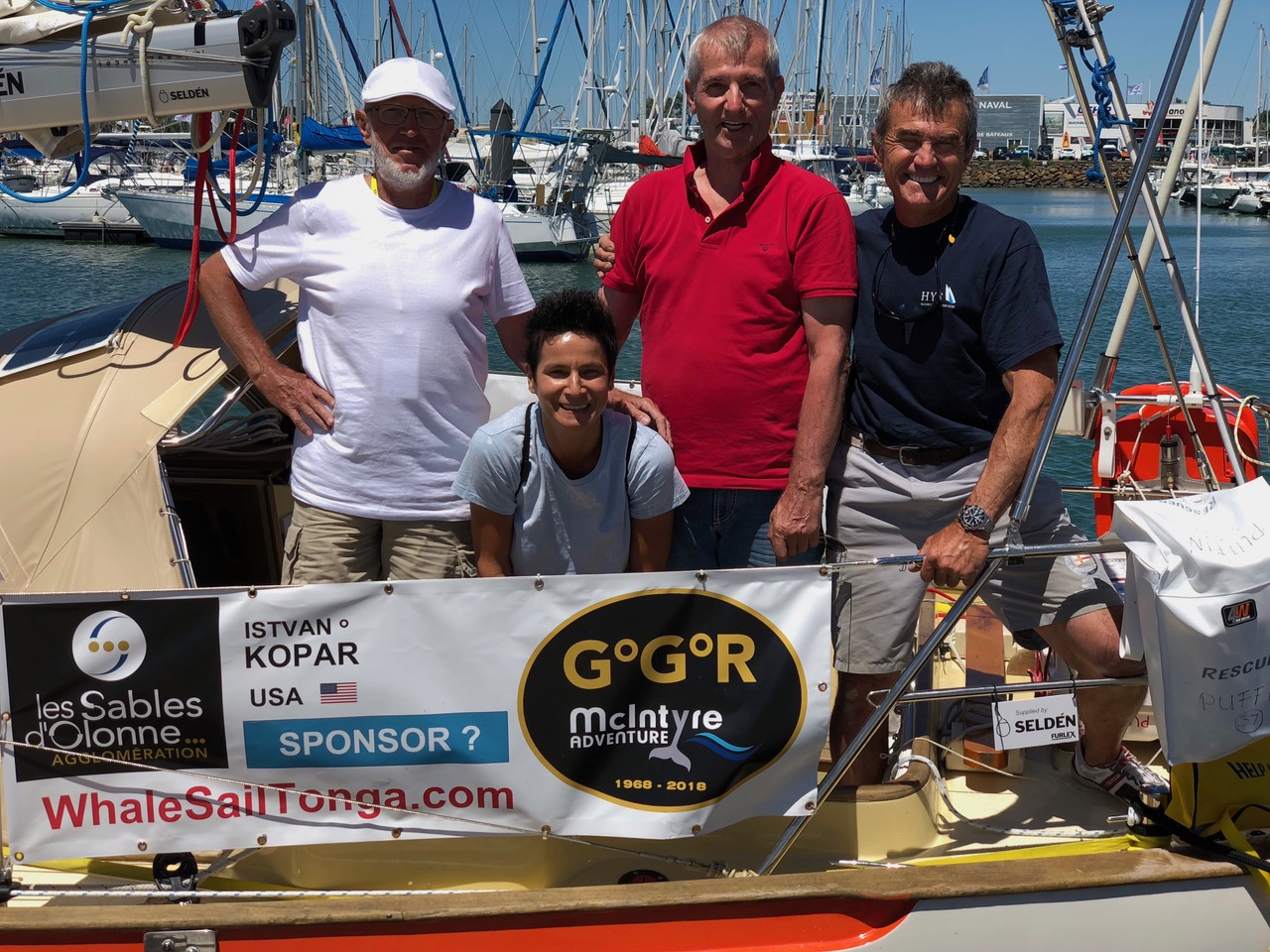
A lengthy 237 days on from the start in Les Sables, our solo non-stop competitors have had plenty of opportunity to demonstrate their abilities, their stamina and their mental strength to the world (and themselves) and even the least perceptive follower of the GGR must by now have formed a pretty good idea of the personalities involved.
Looking at the viewing figures for the race videos from Hobart, it would seem that some of sailors really have captured the heart of their audience. The isolated Tapio has certainly emerged as a star thanks to the remarkable inner peace and general composure he manages to maintain despite living his life just a few short centimetres above a flourishing colony of giant barnacles tended by ever-attentive sharks.
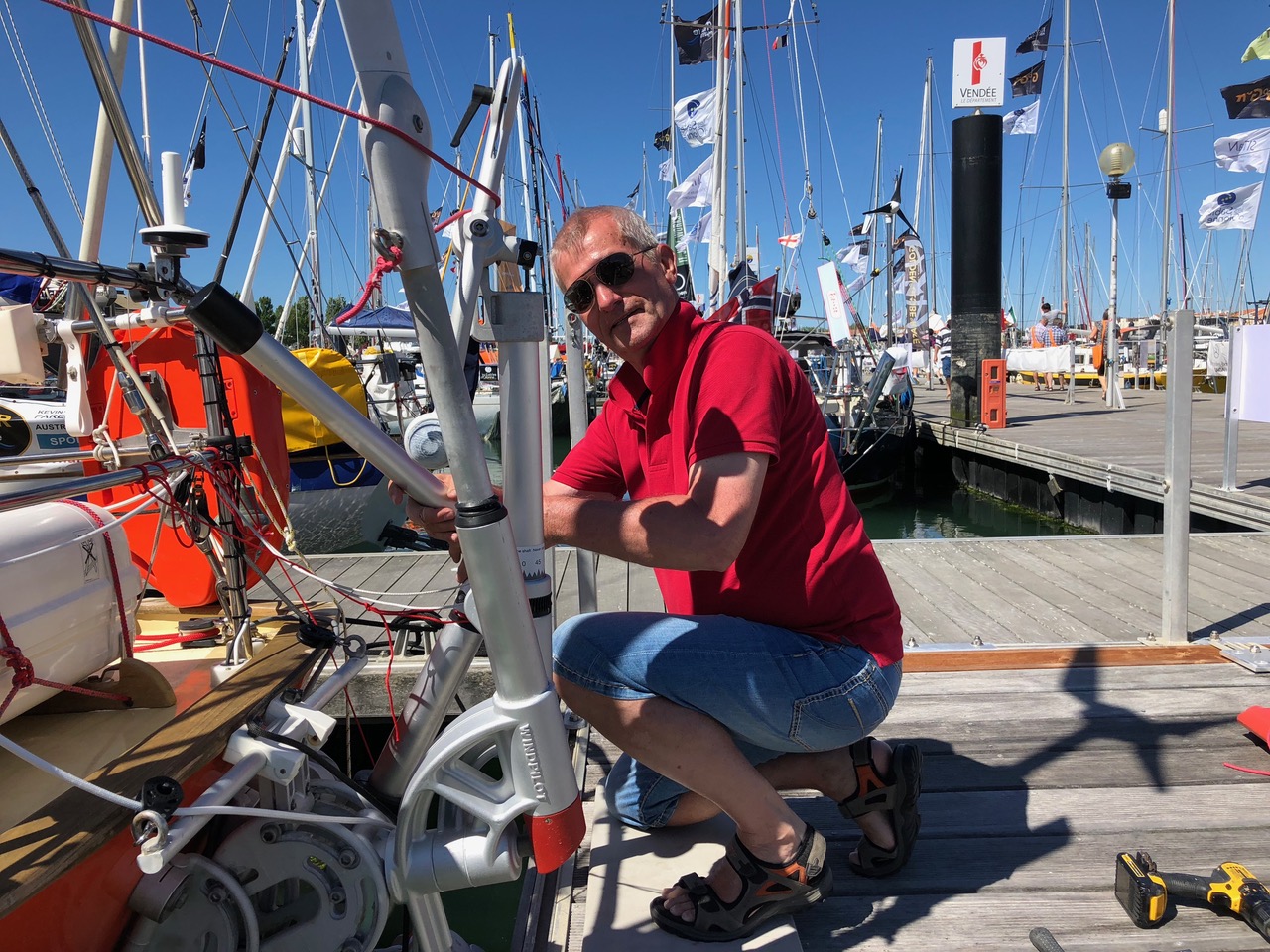
Risking skin in the GGR game has turned out to be a hefty gamble – Russian roulette on the high seas – for purveyors of transom ornamentation. And not just because of the physical challenges to which the race exposes our equipment. The GGR format puts human behaviour and interactions under the spotlight too; not just human-human interactions but also human-machine interactions. The examples of Jean-Luc and Mark illustrate the importance of a harmonious relationship between sailor and hardware.
Ultimately, no matter how much time and effort we put into installation and preparation, the windvane self-steering system manufacturer’s fate is inextricably bound up with that of the skipper. Ideally, both sides in this forced marriage will have the same idea as to the purpose of the relationship, with nothing being more important to both than swift (relatively) and successful circumnavigation. And like all such relationships, there has to be an element of give as well as an element of take.
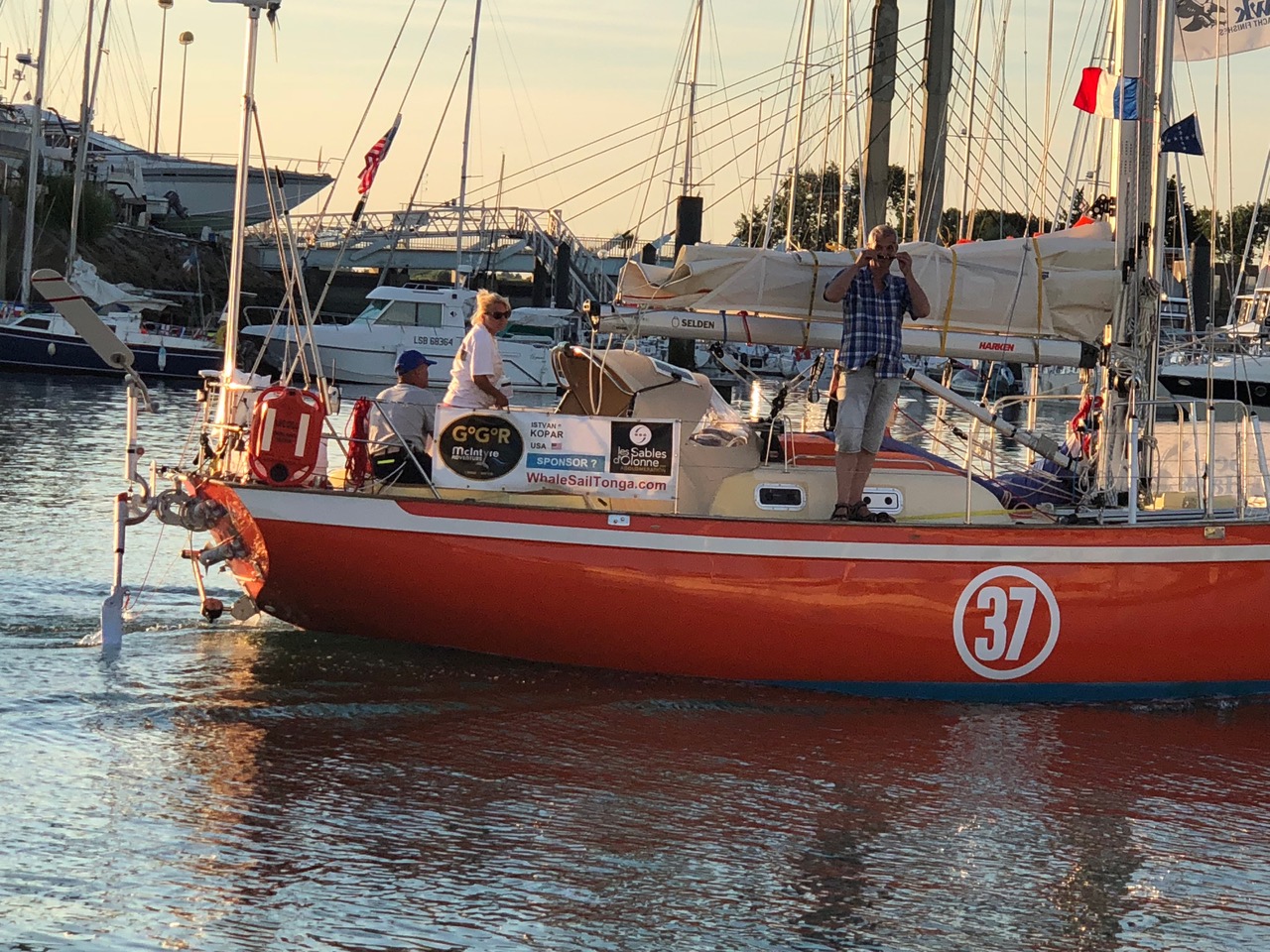
Observant followers of the Golden Globe demolition derby may well already be aware of the lengths (not to mention expense) to which I have been prepared to go to do right by our Windpilot skippers. That is just my way (and the foundation stone of my reputation among the global cruising community). What, then, am I to do when one of the sailors with whom I have worked decides that objectivity, along with any pretence of fairness to his supplier, can safely be jettisoned once at sea?
I have not found it at all easy to shrug off the barrage of criticism directed against my product since the start of the GGR. I decided to make a stand early on and try to limit the damage to my brand by putting the facts out in the open and explaining the situation to the best of my ability. I responded with humour and moderation in public while endeavouring to ease Istvan’s predicament in the background by supplying his shore team (comprising his wife and managers) with detailed advice and guidance as to possible improvements. Whether any of this made a difference I cannot judge, but my suggestions, directed to both sailor and shore team, that a constant stream of blame was not an appropriate way to thank me for my repeated attempts to help certainly appear to have fallen on deaf ears (in which respect nothing – yet – beats the Podcast vom 07.02.2019
“Windpilot killed my steering and killed my GGR.”
What I wanted from the GGR was strong, effective and mutually-beneficial partnerships between sailor and sponsor, so in Istvan’s case at least, things haven’t gone entirely to plan at my end. I don’t know exactly what Istvan wanted from his participation in the race, but whatever it was, he too appears not to have found it. The natural dream, I suppose, was to return a hero and a champion, which must make it all the harder to deal with a steadily deteriorating situation knowing (as he surely must) that the die was cast before the race even started.
GROUNDHOG DAY
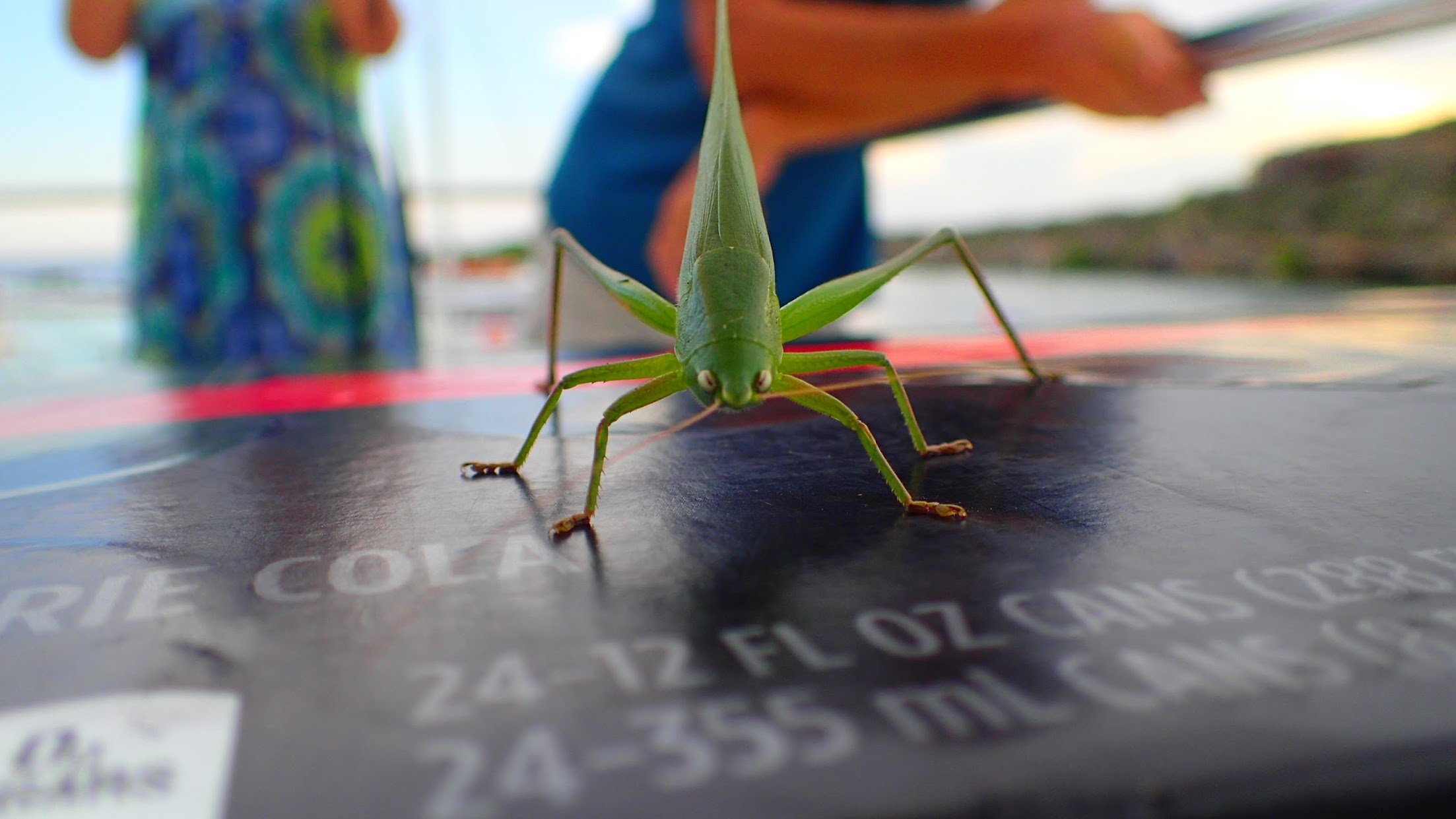
Mechanical windvane self-steering systems are a straightforward tool governed (strictly governed) by a handful of immutable physical laws. There is no such thing as “It doesn’t work”: there will be countless sailors around the world successfully relying on the technology at this very moment. Sometimes the combination of hardware, configuration and immutable physical laws does not deliver the anticipated results straight away, but the problem is usually easily diagnosed and resolved (especially now that almost everyone can take photos with their phone and the manufacturer’s assistance is just a mouse click away). Mechanically-speaking, the Aries, Monitor and Windpilot systems that have featured so prominently in the GGR are like peas in a pod. They may differ in materials and aesthetics, but they rely on exactly the same principles and work in exactly the same way.
Technical details of the unusual Whitlock Cobra 4 wheel steering system fitted to Puffin only began to emerge after the start. The system had a number of advantages from Istvan’s point of view. Unfortunately, it also had a number of disadvantages of which he was apparently unaware, the most serious of which is that it seems not really to be compatible with servo-pendulum self-steering. However tempting it may be to blame the windvane self-steering unit for this, neither it nor the wheel system per se is at fault: it’s just a matter of physics that the two are not a good match.
Puffin did not have much of a history of bluewater sailing prior to the GGR (just one Atlantic crossing from the UK in 1986 with original owner John F. Nally, who thereafter kept it on Lake Champlain in Northern New England) and Istvan’s difficult build-up to the race precluded any proper testing in his hands, so the whole steering/self-steering package was effectively an unknown quantity until the race started. Had I known about Puffin’s steering while there was still a chance to do something meaningful about it, I would have had some strongly worded advice to offer, but like everyone else I only found out after the boats had left Les Sables. Apparently not anticipating that it would be a problem, Istvan had not felt the need to tell me about it (I had asked, of course, but had no reason to suspect anything unusual and so unwisely let it drop when my questions went unanswered).
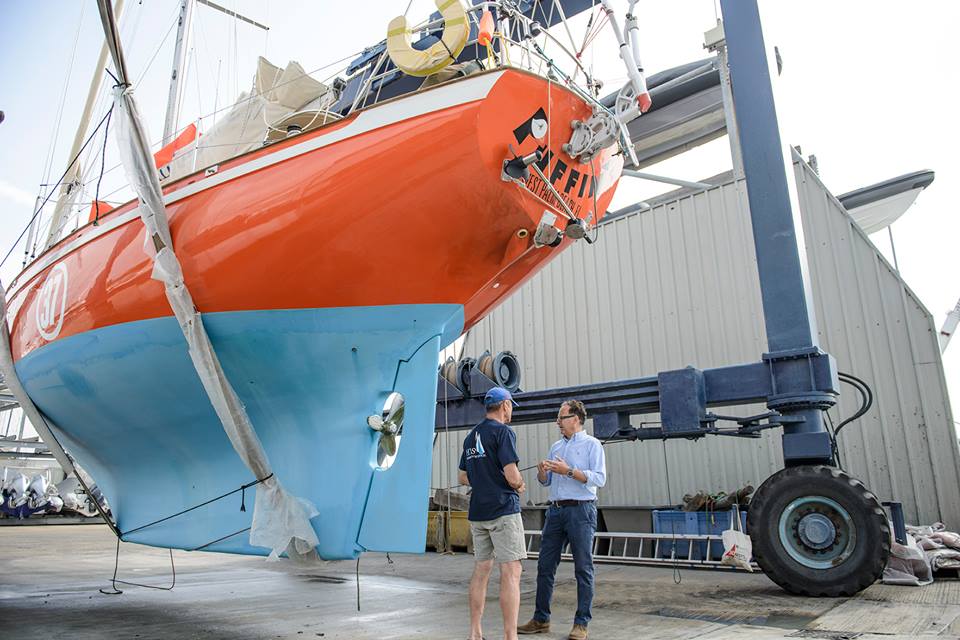
One of the unusual features of the Cobra 4 is that the rudder can be swung through its entire range of movement, from one end stop to the other, in less than one full turn of the wheel. Now, this might make sense for a responsive racing yacht with a semi-balanced main rudder and may well work fine on a lake, but it represents a dangerous handicap on a heavy long-keeler with an unbalanced keel-hung rudder (with a forward-angled rudder shaft, no less). Steering in big seas in circumstances like these will be a Herculean task and potentially too big an ask for the mechanical components of the wheel steering system.
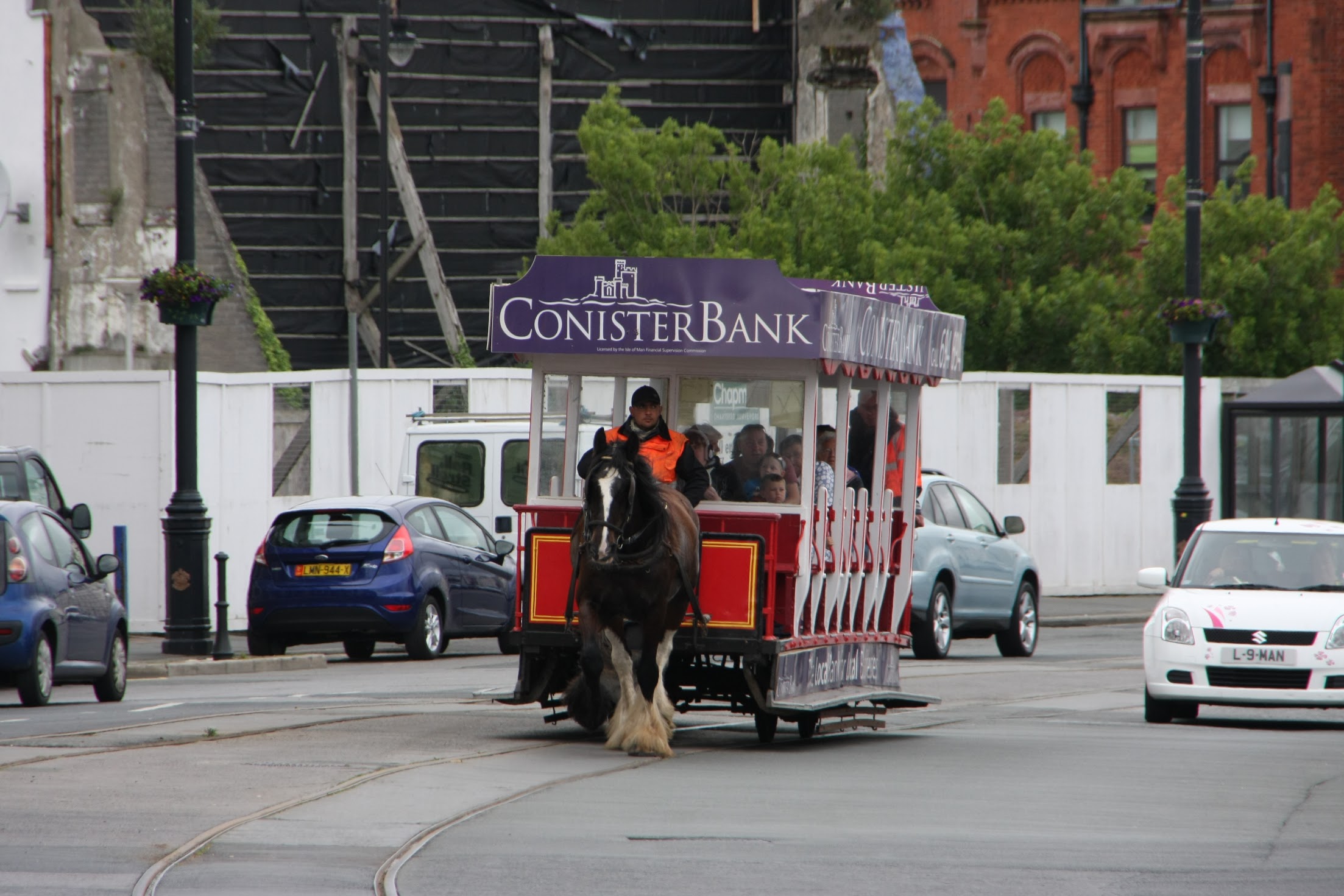
As I’ve written before, it’s rather like trying to drive uphill in fourth gear: the loads imposed on the transmission components of the wheel steering system are enormous. Obviously, the loads are the same when the self-steering system has the helm, which is particularly problematic for the wheel adaptor. Aries, Monitor and Windpilot all use a wheel adaptor with a radius of about 9 cm and it is difficult to imagine any of them holding out under such pressure in the long term.
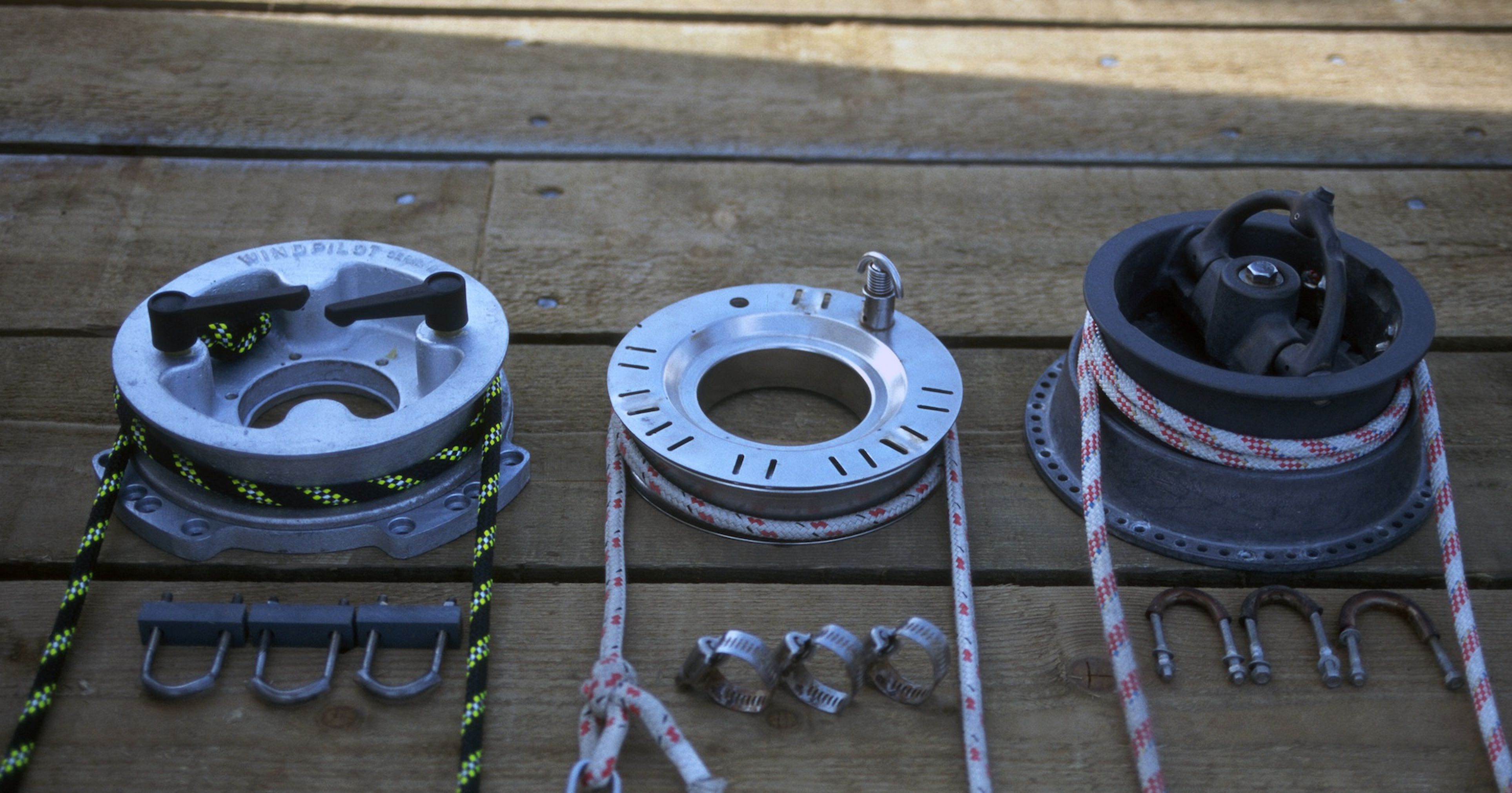
I pointed out the problem with transmitting the steering force straight after Istvan’s podcast and warned his team of the implications. We now know that the Whitlock steering system eventually found the loads too much and failed completely.
A FUNDAMENTAL MISUNDERSTANDING
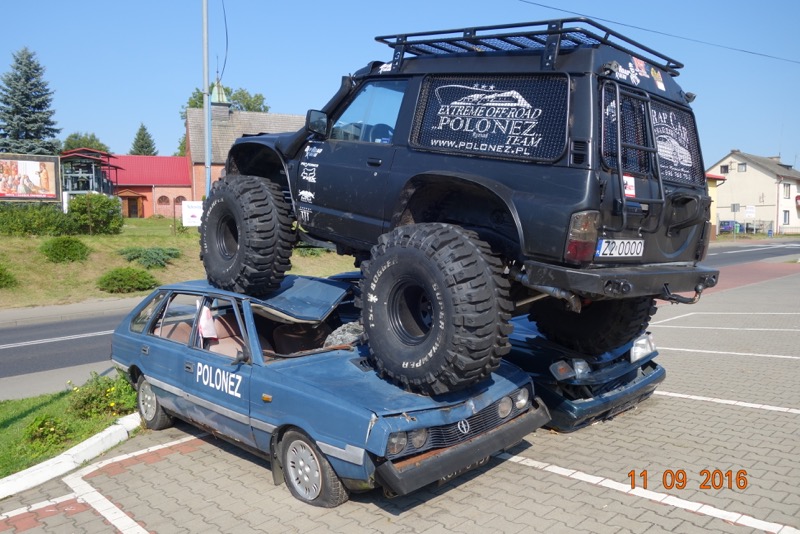
The assertion that the windvane destroyed Puffin’s steering is preposterous and suggests a fundamental misunderstanding of the mechanics at work. A servo-pendulum system is inherently unable to produce a rudder angle of more than about five degrees, so the loads placed on the transmission components and the bevel gears of the Whitlock unit by Istvan’s Windpilot would have been moderate at the most. A human helm, especially one in race mode (as Istvan regularly reminds us he is), will surely apply much greater and more abrupt manual rudder movements to keep the boat on course. It should be self-evident that larger rudder angles entail a proportionate increase on the loads imposed on the mechanical components of the wheel steering system. That being the case, the windvane self-steering system can hardly be blamed for the damage to the Whitlock. The obvious conclusion is that the Cobra 4 simply doesn’t suit a Tradewind 35 racing around the world.
I believe that wheel steering systems should be designed to manage whatever loads they might potentially encounter. A boat heading offshore must have a steering solution with the additional reserves of strength needed to cope even with sudden extreme manoeuvres or knockdowns in the worst of weathers. A wheel steering system that cannot do this has no place on a bluewater boat headed for higher latitudes. Trying to race around the world with an untested and unprepared system just invites the kind of problems we have seen.
I cannot allow the matter of the emergency tiller to go unmentioned either. An emergency tiller needs to work reliably as a tiller – isn’t that the whole point? – and Istvan’s position now would be much better (especially with regard to self-steering) had his not come up short. Once again, proper preparation (or the lack thereof) before the start turns out to be critical once the gun has fired.
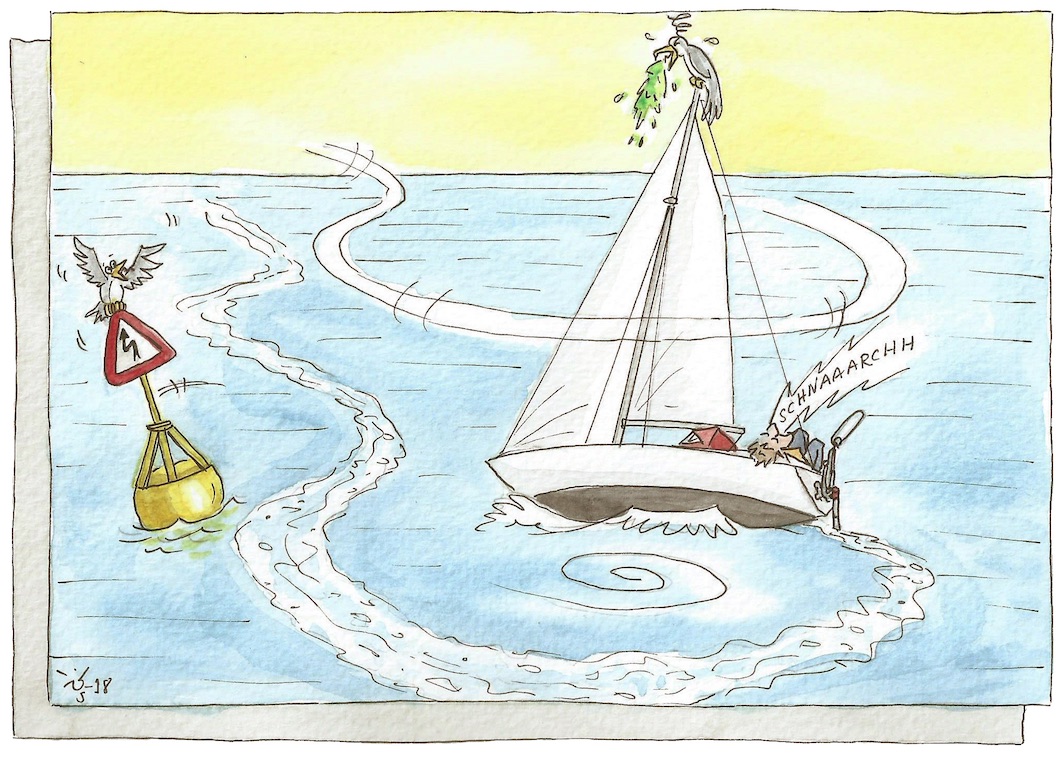
Correspondence indicates that Istvan started to notice some of the consequences of these planning errors on the passage over to Europe ahead of the start, but – for whatever reason – he seems not to have appreciated their seriousness (and the manufacturer of his windvane self-steering system, who kept asking very specific questions, was not properly consulted). Istvan is a professional sailor who has made his living as a sailing teacher and delivery skipper, has spent decades afloat and has already been around the world once with a similar servo-pendulum system, so had he only asked the right questions of himself at the right time, he would surely have recognised the obvious signs of trouble before the race; after all he had even described his boat as a “blind date” in correspondence. I suspect the challenge involved in just making the start line of the GGR was so great that he did not have the luxury of properly understanding and preparing either his boat or himself.
Philippe Péché gave a shortInterview with YACHTING MONTHLY in which he freely admitted,
“I should have done a lot more training both with the self-steering system and with the boat.”
I suspect Philippe is not alone in that, but apparently not everyone has the insight or perspective to see their own performance in such a critical light. Owning our mistakes is one approach, doing everything we can to offload any responsibility onto someone else is another. Each to their own? Up to a point, perhaps, but when I see my business suffering collateral damage I have no option but to set the record straight
Things are not always as they seem:
From Istvan´s Podcasts:
„My boat is a blind date for me regarding her sailing abilities but this was my only option to get into the Golden Globe 2018 race with an accepted design (and affordable price)”
Istvan has repeatedly stated in public that Monitor would have been his first choice but that he couldn’t afford one. This came as a surprise to me based on our original correspondence.
Email dated 01.03.2016:
Hi Peter,
Jimmy ( Cornell ) gave me your contact, as you see this below and I have been in a dilemma to pick the right wind vane since I want to win The Golden Globe 2018 :-).
Hydrovane got my attention but I do not like its fix rudder blade or the difficulty to replace it in case of trouble. My budget is the other factor, I have been in sponsor hunt and lost my job due to my enrollment in this “crazy” race … Jozsef Gal ( Equator 44′) is a close friend of mine, who did a circum navigation with Windpilot and he was very satisfied.
As far as I can recall, the Monitor idea first came up in a disconcerting ultimatum I received shortly before Puffin’s arrival in Southampton, which insisted that the Windpilot would be replaced (with a Monitor) if I didn’t immediately attend the boat in person. Southampton on those terms and with that little warning was quite out of the question, but I headed to Les Sables a few weeks later ready put everything through its paces with Istvan out on the water. But it was not to be: scheduled trial sails were repeatedly postponed and cancelled such that in the end we only managed one short test run – in a virtual flat calm – as part of a media event held to allow the cameras to capture some footage of the solo maestros at sea (Istvan’s wife Eva, his friend Vily and I were all confined below decks for this so as not to detract from the video and photos).
My wife and I spent entire days on Puffin, sorting out the wheel adaptor (the original installation was all wrong), fitting the SOS emergency rudder and loading the boat with all manner of spare parts (and adding all the countless little touches you do when people you care about are embarking on something big). There were smiles, hugs, invitations to meet up again “afterwards” and best wishes all round. We came with a smile to do what we could and met with a grateful response (the sort of grateful response that seems very apt when people receive services for which they do not have to pay – we did actually have an invoice for the SOS emergency rudder and various spares with us ready to hand over, but the constant refrain of tight funds and spiralling expenses persuaded us to set it aside).
My wife and I agreed at the time that we had done everything we could to help this particular sailor enjoy an incident-free voyage, at least as far as transom ornaments were concerned, and as far as we could tell we had a satisfied customer.
A RUDE AWAKENING
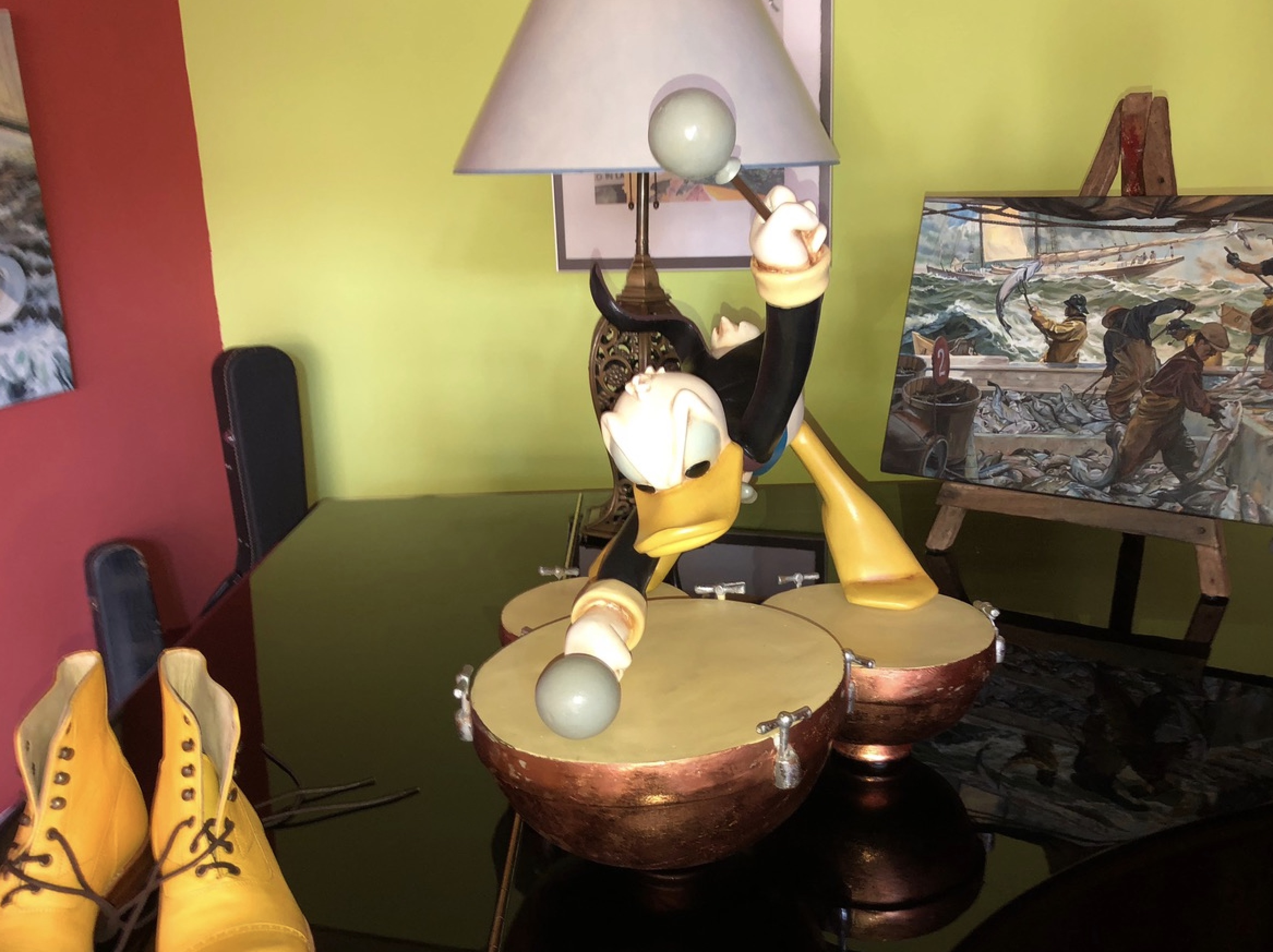
We only had to wait a few days to find out just how badly we had misread the situation and from then on, the steady drip, drip of claims and accusations against us has been part of the story of the race. Promises, agreements… all gone with the wind!
There have been moments of clarity aboard Puffin, it has to be said:
Maybe the Whitlock Cobra 4 is the reason for the problems … not the cable thing, but directly linked via rod … not even one full turn from lock to lock … maybe thats the issue about the problems with the wind vane … the other entrants have different type of steering … maybe Windpilot will work with tiller … but on the other hand cable steering below the cockpit floor would block my lazarette and access to the winches … and space below cockpit would have been limited … also an emergency tiller would block cockpit … to cut a long story short: its a big drama about what to do next … obviously I made a mistake not to go to Marina Lanzarote … to change systems … and get a Monitor
But the entrenched misunderstanding of the whole problem just refuses to go away:
Windpilot is very different than other systems before … its acting differently … still a mystery to me …
Sometimes the facts have been brushed aside altogether in favour of a good story:
5 bolts are missing from the original bag, original unit was shipped to US without the missing bolts … Peter took apart … he did adjustments, but did not fit the bolts … I found 5 bolts … clutch was not working … due to missing bolts. I feel that I have got screwed several times …
Time and again the need for scapegoats:
It was a the huge fault deciding for the Windpilot … emergency tiller material was too weak … I have given the worker the details … but he did it wrong … windpilot wheel drum is an ongoing issue … I inspected the pedestal … bearings on main shaft are worn out … thinking to make new bearings … wish to talk to Whitlock technicians … about details in gearbox … I epoxied rudder stock … emergency tiller hold only for couple of hours … I tried to eliminate shocking on the steering wheel due to shock cords … I am planning to stop and create a plan to replace bearings by wooden ones … its wobbling too much … I don´t know which material, the bearings are. The problem is the bearings …
And onwards to the final (for now) bleak verdict:
I decided for Windpilot due to financial reasons … If I had a reliable wind vane, which would not ruin my pedestal steering … I would have been better in the GGR … Peter did his best … helped best as he can … its not his fault .. In my case the windpilot is not good for the Tradewind 35 in the GGR … I will write a serious report … obviously his windpilot is not right for this kind of sailing … Windpilot killed my steering and killed my race
I wrote a long e-mail to Istvan’s wife and shore team on 28.11.2018 (Hobart) with a whole series of pointers and suggestions for the second half of the race. Eva’s response was brief:
I personally have no time to read and take out the most important part to help Istvan. If there is a problem solving opinion come up, that has to be very short and perfect. Otherwise, Istvan’s radio operator guy would not be able transmission to Istvan. As you know he has radio problem on board besides continually problems with wind vane.
Try to be so productive like Monitor guy was in Hobart to help out Susie ‘s wind vane problem.
Thanks
Mrs. Kopar
Jimmy Cornell sent me the following e-mail after my first blog on the subject in July:
Hello Peter,
I read your comments and found them interesting because when I spoke to Istvan and he described the problems he had with his selfsteering, I told him about my doubts of his steering system being able to cope with his current selfsteering gear. You have now confirmed that my suspicion was correct. I don’t know what Istvan is going to do but it could be a major problem for him.
I sincerely hope that he will find a solution before, as you say, he reaches the Roaring Forties.
Warm regards from London
Jimmy
I have to admit my wife was spot on when she smartly pointed out, after the first podcast, that it would suit us very well to see a Monitor on the back of this man’s boat too. It is a shame that logistical difficulties prevented the mooted swap in Mindelo, although probably not for our US counterpart Mike Scheck of Monitor supplier Scanmar, who could easily have found himself answering for three supposedly defective systems like another of our competitors from La Rochelle. Monitor may well have dodged a bullet there (did I mention it’s like Russian roulette?).
IN SUMMARY
My thoughts and concerns in relation to the GGR centre very much on personal relationships and the way that we as humans choose to interact with one another. It is usually different among sailors, with rather more respect and restraint in play. Jean-Luc and Mark have shown how it should be done. No doubt they had their issues, but both have behaved in an exemplary manner towards their backers throughout.
I have articulated my views on this event many times now. I shared technical summaries and conclusions in my Windvane Striptease article, which has been viewed thousands of times.
And I have explained in detail why I think it is decidedly awkward for an event organiser to be tied to a sponsor in a way that creates such an obvious conflict of interest in the administration and reporting of the race.
What I haven’t yet commented on is the behaviour of a media industry that is all too happy to copy and paste the GGR press releases (meticulously crafted as they are by professional journalist Barry Pickthall) to boost its own footfall but that generally seems to have little or no appetite to drill down into the issues raised for the benefit of readers. Windvane self-steering systems have featured prominently in news from the race, but look beyond the headlines and the topic is barely mentioned aside from a few general comments regurgitated from the race press office (which comments, for obvious reasons, are not always overly favourable to companies with no direct investment in the organisation).
This is not in any way intended as a slight on the race; I am merely pointing out that the sort of thorough research that would be needed to give their readers a proper understanding of the situation is quite obviously more effort than it is worth (professionally or financially) for the media outlets concerned. I would have thought magazines would welcome such a serendipitous opportunity to (re)capture the interest of a global readership, but then again…
Fortunately, there are a huge number of sailors around the world who continue to send very specific questions on the subject in my direction because they take it for granted not only that I know my stuff, but also that I’m easily contacted and liable to give them a comprehensive answer on any aspect of windvane self-steering technology and the market (in fact this is probably also the main reason behind the growing popularity of this blog). All of this, I have to say, seems like a perfectly equitable return on the long nights I have invested in front of the keyboard.
It feels to me as though the sad situation that has developed with Istvan Kopar ultimately comes down to respect. I understand his predicament and I have sympathy for the position in which he finds himself, but I can’t stand by while he trashes my brand for catharsis without for a moment (so far as we can tell) doubting himself or considering the implications. When it comes to helping sailors prepare, I am all enthusiasm, but taking the blame for other people’s oversights once the time for preparation has passed doesn’t seem to be my thing at all!
Istvan though is but one cog in the GGR machine and the GGR is but one story in the wide, wide world of mechanical self-steering, so I cannot allow the whole thing to dampen my spirits. Thankfully we have the coping mechanism of humour – this nice bit of black humour from English sailing circles that recently landed in my inbox, for example:
I’m especially looking forward to finding out how your self-steering is strong enough to crush gears and how you managed to persuade all those thousands and thousands of other customers not to mention that Windpilot doesn’t steer but does destroy boats.
By the way, Istvan must be pretty tired after all those months with no self-steering, right?
The old-time seafarers of the North German coast used to tell tales of the Klabautermann, a supernatural being thought to live aboard alongside the crew. Often the Klabautermann was a benevolent presence, helping with the nets and keeping a close eye on the ship and its company. Sometimes, however, the Klabautermann could be a more malevolent force: if bad things were happening and nobody knew who was responsible, the Klabautermann caught the blame.
Istvan’s GGR still has a long way to run – long enough, I hope, for him to make peace with his Klabautermann.
Wishes Peter Foerthmann
































